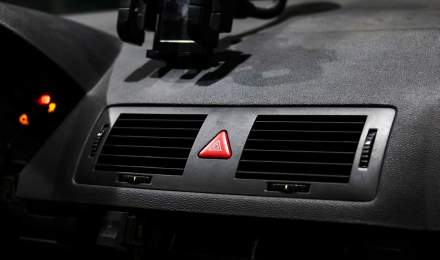The German driving license practical test is a critical milestone for anyone looking to drive on the roads of Germany. This test, with its specific German driving license practical test questions, ensures that drivers have the necessary knowledge and skills to navigate various driving conditions.
These German driving license practical test questions are written based on personal experience.
German Driving License Practical Test Questions
Before you even start the engine, there are essential aspects of your car that you must know. During the practical driving test in Germany, you may be asked simple questions about your vehicle. These questions will be in German, and while you can explain the answers in English, it’s vital to understand and show how to perform specific tasks.
From knowing how to check the oil level to understanding the different lights and their functions, these details are crucial for safe driving.
Knowledge About Your Car
Basic Knowledge Required About the Car
In Germany, the practical driving test emphasizes this understanding, ensuring that drivers know the essential functions and features of their car. Before the driving test begins, the examiner will assess how much knowledge you have about your vehicle. This knowledge is not only vital for passing the test but also for safe and responsible driving.
This section will guide you through the most important topics you need to know, helping you feel confident and prepared.
Knowledge About Your Lights
Understanding the various lights on your car is crucial, especially when driving in different conditions such as dark country roads, autobahns, tunnels, and low light situations. Here’s what you need to know:
Automatic Headlights – Automatische Scheinwerfer
Automatic headlights activate without manual intervention in dark conditions. The mechanism may vary from one car model to another, but the concept remains the same. Make sure to check how it works in your specific vehicle.
Dim Lights/Dipped Headlights or Low Beam Lights – Abblendlicht
These lights are used during dark, rain, snow, or when driving in a tunnel. Knowing how to turn them on and off is essential. You must also understand the difference between driving beam and passing beam lights.

Side Lights or Parking Lights – Standlicht
Also known as “Standlicht” in German, these lights are activated by turning the indicator towards the parking light symbol. Understanding this function is vital for proper usage. Turn it on by simply moving the indicator towards the parking light symbol. This is the control for the Standlicht or the parking lights.

High Beam – Fernlicht
High beams provide greater visibility but must be used responsibly to avoid blinding other drivers.
Foglights – Nebellicht
Fog lights are found on both the front and rear of the car. The front fog lights are indicated with a green light and the rear fog lights with an amber light.
Hazard Warning Lights – Warnzeichen
These lights are used in case of breakdowns. A common question among the German driving license practical test questions might be, “Könnten sie bitte die Warnzeichen einschalten?” (Could you please turn on the hazard warning lights?).
Push the button to switch it on, and press it again to turn it off. We can use these lights in the case of breakdowns. Knowing how to activate and deactivate these lights is crucial.

Information About Your Tires (Reifen)
In this section, we’ll explore what you need to know about your tires, including one of the German driving license practical test questions you might be asked during the test.
Tires are the only part of the car that makes direct contact with the road, making them a critical component of safe driving. Understanding your tires is not only essential for the practical driving test in Germany but also for your overall safety on the road.
What to Watch Out for in Your Tires
One common question that you might be asked during the practical test is, “Was muss du in den Reifen beachten?” (What do you have to watch out for in your tires?). Here’s what you need to know:
Tire Pressure – Reifendruck
Tire pressure is vital for optimal handling, fuel efficiency, and tire lifespan. Regularly checking and maintaining the correct tire pressure is a responsible driving practice.
Tire Thread – Reifenprofil
The tire thread must be a minimum of 1.6 millimeters. This ensures proper grip on the road, especially in wet conditions. A worn-out tire thread can lead to reduced control and increased stopping distances.
Tire Damage – Reifen nicht beschädigt
Inspecting your tires for any visible damage, such as cuts, bulges, or punctures, is essential. Damaged tires can lead to sudden failure and pose serious safety risks.
How to Check the Oil Level
Oil is the lifeblood of your engine, and knowing how to check the oil level is a fundamental skill for every driver. During the German driving license practical test, you may be asked about this, and while you can reply in English, it’s essential to know how to perform this task.
Guide to Checking the Oil Level
- Pull the Dipstick Out and Clean It: Begin by carefully removing the dipstick from its tube, wiping it clean with a cloth or paper towel. This initial step is crucial as it removes any residual oil and ensures that you get an accurate reading of the oil level.
- Insert the Dipstick into the Tube Slowly: Once cleaned, reinsert the dipstick into the tube, making sure to push it all the way down gently. This action allows the dipstick to come into contact with the oil in the pan, providing an accurate measurement.
- Take It Out Again and Look Closely at the Tip: After allowing a moment for the oil to settle on the dipstick, remove it once more and carefully examine the tip. Look for the oil level to fall between the two marked lines on the dipstick. If it does, you can rest assured that your vehicle has an adequate amount of oil.
How to Sound Your Horn
Knowing how and when to use your horn is an essential skill that may be assessed as part of the German driving license practical test questions. The horn is a vital communication tool on the road, used to alert other drivers or pedestrians of your presence.
Proper Usage of the Horn
The horn serves as a vital tool for communication on the road. It can be used to alert other road users of potential danger or to get their attention if necessary.
However, it’s essential to use the horn judiciously and avoid causing unnecessary noise, especially in residential areas where excessive honking can be disruptive.
Additionally, different areas may have specific regulations regarding horn usage, so it’s wise to be aware of local rules.
Checking the Brakes
The brakes are one of the most critical safety features of your car. How to check them and understand their proper function is not only a vital aspect of the German driving license practical test questions but also essential for your overall safety on the road.
How to Check the Brakes
- Visual Inspection: Regularly inspect the brake pads for wear and tear. Look for any signs of damage or uneven wear.
- Feeling the Brakes: Pay attention to how the brakes feel when you press the pedal. Any unusual sensations or sounds may indicate a problem.
- Professional Inspection: If you suspect any issues with your brakes, it’s wise to have them inspected by a professional mechanic.
Conclusion
We have explored the essential German driving license practical test questions, covering everything from lights and tires to checking the oil and brakes. Apart from these questions, I would highly suggest reading my top tips that can help you pass the practical driving test in Germany.
We hope this guide serves as a valuable resource as you prepare for your practical driving test in Germany. If you were asked different questions, please share your experience in the comment section.
For beginners, I would suggest learning about defensive driving techniques. Good luck, and drive safely!






